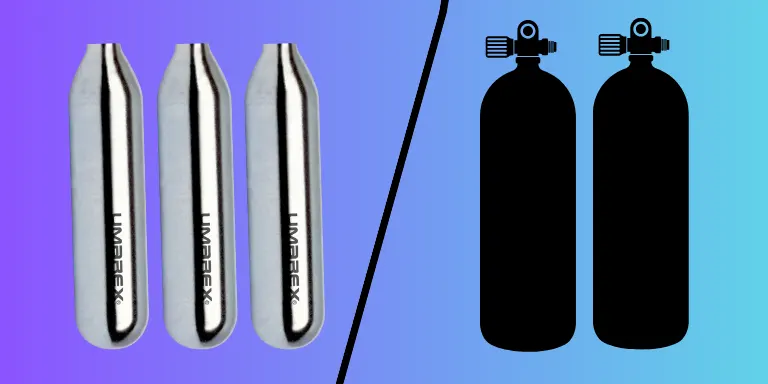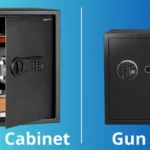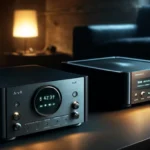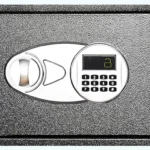When it comes to choosing the right propellant for your air-powered firearms, the details matter. As gun safes brim with prized possessions, understanding the subtleties of co2 vs compressed air can profoundly impact both performance and maintenance. This article delves into the nuances of these two popular options, helping you make an informed decision that complements your collection.
In This Article
The Basics of CO2 vs Compressed Air
CO2: A Classic Choice
CO2, or carbon dioxide, is a colorless gas under normal atmospheric conditions. When compressed, it can be stored as a liquid in small, sealed cartridges. Upon release, CO2 expands, providing the force needed to propel the pellet or BB from an airgun. It’s known for its convenience and ease of use, but there’s more to it than just popping in a cartridge.
Compressed Air: The High-Pressure Alternative
Also known as High-Pressure Air (HPA), compressed air is exactly what it sounds like air that’s been compressed to a much higher pressure than our normal atmosphere. Stored in tanks much like scuba tanks, HPA systems require more initial setup than CO2 but offer distinct advantages in consistency and performance.
Step 1: Understanding the Mechanisms
How CO2 Guns Work
When a CO2 cartridge is pierced, the liquid CO2 inside is released and rapidly expands back into a gas. This sudden expansion provides the force that propels the projectile. The simplicity of this system makes CO2-powered guns incredibly user-friendly.
How Compressed Air Guns Work
Compressed air guns utilize a reservoir that holds air at pressures typically around 3,000 to 4,500 psi. When the trigger is pulled, a small amount of this air is released, pushing the projectile through the barrel. This system requires more robust engineering to handle the high pressures involved.
Step 2: Examining Performance Factors
Temperature Sensitivity
CO2 is highly sensitive to temperature changes. As temperatures drop, CO2 becomes less efficient, potentially reducing shooting power and accuracy. In contrast, compressed air is less affected by temperature, maintaining consistent performance in varying conditions.
Shooting Consistency
The consistency of CO2 can diminish as the cartridge empties, leading to a decrease in power with each shot. Compressed air systems, on the other hand, provide a more constant pressure until the air tank nears empty, offering a steadier performance throughout.
Rate of Fire
For rapid-fire scenarios, compressed air is superior. CO2 can cause ‘cool down’ when fired quickly, where the expanding gas cools the cartridge and reduces its pressure. This doesn’t affect compressed air systems, making them ideal for competitive shooting.
Step 3: Considering Cost and Accessibility
Initial and Ongoing Costs
While CO2 cartridges are inexpensive and readily available, the cost can add up over time with frequent use. Compressed air requires a larger upfront investment in equipment such as tanks and pumps or compressors, but the refill cost is minimal, especially if a compressor is owned.
Availability
CO2 cartridges are ubiquitous and can be found in many stores. Compressed air needs more specialized equipment and places to refill, although many paintball fields and shops offer this service.
Step 4: Thinking About Maintenance and Lifespan
Gun Maintenance
Guns powered by CO2 are generally simpler and require less maintenance than their compressed air counterparts. However, CO2 can leave a residue inside the gun that needs cleaning. Compressed air guns face more stress due to higher operating pressures, potentially requiring more frequent maintenance checks and part replacements.
Longevity of Equipment
Properly maintained, compressed air tanks can last for years. They must be hydro-tested regularly to ensure safety. CO2 cartridges are single-use, with the spent cartridges contributing to waste, which might be a consideration for environmentally conscious users.
Step 5: Making the Best Choice for Your Needs
Consider Your Usage
If you shoot occasionally and value convenience, CO2 might be the way to go. For competitive shooters or those who train frequently, the reliability and consistency of compressed air are unbeatable.
Environmental and Practical Considerations
Think about where you’ll primarily be shooting. If you’re often in colder environments, CO2 might pose problems. Also, consider the environmental impact of disposable cartridges versus refillable air tanks.
Budget Constraints
Assess how much you’re willing to invest upfront versus over time. CO2 has lower initial costs, but compressed air may be more economical in the long run.
Related Post: Co2 Pellet Pistol For Target Shooting
Conclusion
Both CO2 and compressed air have their place in the world of air-powered firearms. By understanding the detailed characteristics and differences of each, you can choose a system that not only fits your immediate needs but also enhances your long-term shooting.



